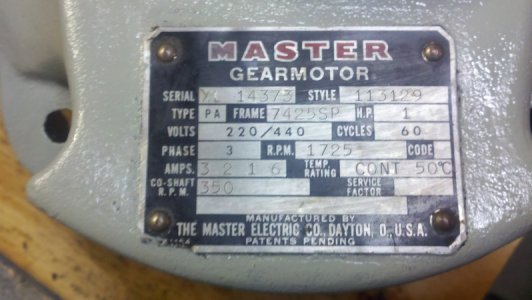Actually, not many EEs know this stuff any more. Power specialists try to get out of AC power line stuff all they can, and no one who can do the math wants to be stuck in power engineering. No money there. But I did have some motors classes and did design transformers for a while.
The only way to tell if it's internally jumpered, etc. is to open it up and look for any possible jumpering. Then the problem is that it may have been rewound to some particular voltage.
The only non-laboratory way I know to see what voltage it's supposed to be running at is to slowly increase the voltage to it a nominal power line frequency, and watch the current it draws with no load on the motor, just spinning itself. The current will increase more-or-less linearly until at some point it will start increasing more quickly than it has before. That's the onset of magnetic saturation in the iron, and the voltage-divided-by-frequency there should not be exceeded. This is where energy starts going into the iron, not moving the motor. The current there is much less than full load current, because it's not turning a load, so the magnetizing current is the majority of the power in. Gotta have good, easy spinning bearings to find this point. A mechanical load will cover up the place where magnetizing current increases. It's not an easy test, even though it only needs a variable voltage source and a current meter.
The volts-per-Hertz is a maximum for the motor. Using a variable frequency drive allows you to run the motor at less than the design frequency, and that means that your VFD has to be smart enough to reduce volts with frequency. Most are, but it's something to be aware of.
You know, the more I think about it, maybe the best thing if you want to know about it is to find a motor rewinding place and find the old, grouchy guy in the back room and ply him with donuts, or cigars or something to tell you all he can about the motor. These guys usually feel underappreciated, so it often works. He should at least be able to tell you what not to run it over.



